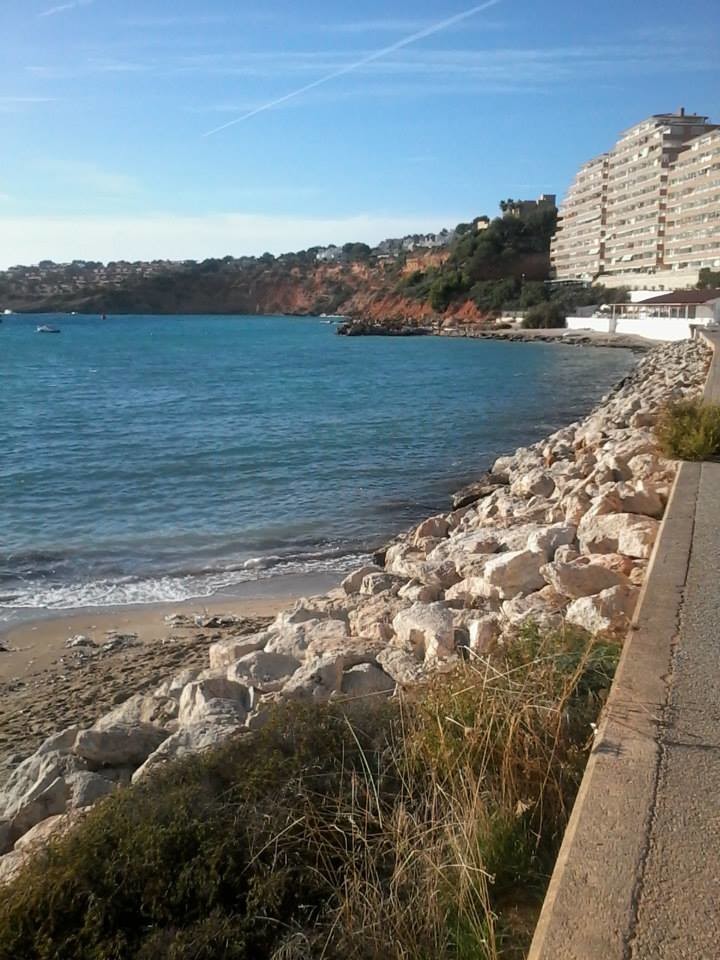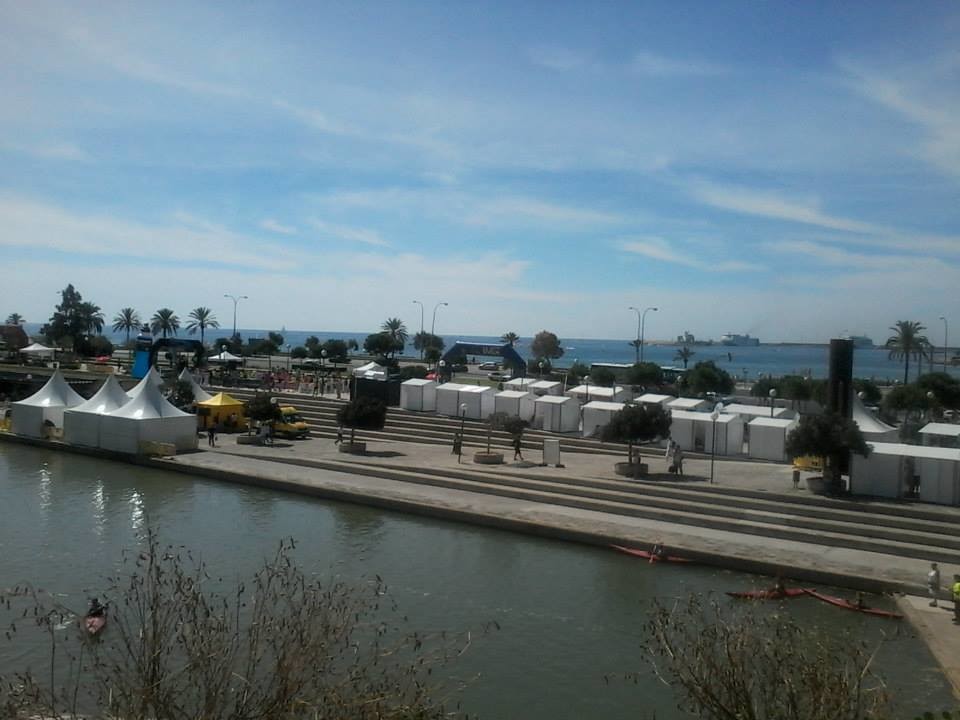The differences of the school system between Spain and Italy
Here we are again, with an article that I would describe as a dive into the past: I decided to write this due to me being in a nostalgic period, and because of me reminiscing those days on a full time basis I can't help but to tell everyone about the little details that I may have left out when I first talked about my story in a broader sense. In this last period, for the most various reasons, I happened to talk about Majorca again while I was having some conversations, both to give some more information about myself and to get the ball rolling with people I had just met. Beyond this peculiar instance and the basic notions that I have not been able to include in my previous articles, today's piece is going to be exploring the school system in Spain. My exchange period, as I've already mentioned in other blog posts, took place during the fourth year of high school, so I found myself facing a somewhat different quarter than those what I was used to. Unfortunately, this web platform does not allow to add poetic background music, so I will accompany my words with some of my shots (but beware: I was not a skilled photographer at that time, nor am I now).

First of all, a significant difference concerned the classrooms, since in Italy students are used to staying for six hours in the same room, and the only change of subject is signalled by the coming and going of the professors. Instead, in Spain one is used to going from one classroom to another, and seeing at the end of every class a huge displacement in the corridors of the school. For an Italian exchange student and for those visiting for the first time a school that is not her own can prove to be a challenge, especially in the early days, which should be devoted to finding your way in the new environment.
Another problem that one could encounter and that can become a great obstacle is the assessment system for each subject. Firstly, one must note that Majorca is an area of Spain with a very strong Catalan influence, and consequently you are constantly surrounded by people who prefer to speak Catalan or the local dialect - which for the most part is a variant of the main language -: you would be lucky to find teachers understanding enough to willingly adapt to other Europeans, who are used to studying Castilian. In my case, I could take classes of some subjects, such as history, philosophy, physical education and mathematics, with the professors giving their lectures in a language that I could understand. On the other hand, during courses such as science and art, I had to attend classes held purely in Catalan - at the discretion of the concerned professor -, who nonetheless provided me with notes in Castilian. As a result, I wasn't able to have a complete picture of the knowledge required in any written tests or exams, and above all I lacked the selection parameters to understand which parts of the classes would be crucial for the examination, and which wouldn't.
I still remember my eagerness and anticipation after an art test, for which I had studied for many afternoons, crumbling in less than a fraction of a second after the teacher handed us back our work. I am one of those people who is greatly disappointed when their expectations are not met: imagine getting back your test, which you filled with detailed answers, evaluated as an insufficient work. The most surprising part of the day, however, came when I was asking the opinion of my classmates: Spanish students, in general, do not fall for negative results, especially because they are used to receiving grades that can literally vary from zero to 10, where 5 is the beginning of sufficiency. On this occasion, there were students who had passed the test, but the majority of my classmates had received grades like 0. 4 or 2. 7 and wasn't bothered at all, while I was dissatisfied to have reached a mere 4. Nonetheless, the episode that shocked me the most concerns a lesson of PE: I always sucked at it, but sometimes I managed to get some recognition for my efforts. Well, during the same class I managed to get a 0 in a test of physical resistance, which consisted of doing ab cruches without pushing with the arms or any kind of help - in a minute, I couldn't get up even once! - and a 10 in a test of flexibility, where my merits depended simply on 10 years I spent doing classical ballet. To sum up, the conversion of my grades in Italy corresponded to those that I'm used to take at home, except for maths, where my teacher gave me a 5 interpreted in the Italian manner.

The most striking difference between the school systems, however, are the school years, since in Italy students are used to attend five years of high school, while in Spain they only attend two years. In the end, the difference is minimal, as their bachelor degrees are based on four-year programmes instead of the three years of the Italian universities. In addition, there is no difference between professional or technical institutes and high schools, as there is in Italy: instead, every student attends a "bachillerato" (baccalaureate diploma programme) to then choose different optional subjects, according to his/her interests or to the future field of specialization he/she wants to pursue at university. Another unique characteristic is represented by the use that the students have to make of an ID card to be able to enter and leave the school: this schedule is established both thanks to the classes timetable and the breaks.

As of now, I have always talked about the differences, but there are also analogies between the two school systems, such as the final exam we undertake at the end of high school: we call it "maturità", while they call it "selectividad", and its outcome can be decisive for the selection phase during the enrolment at your future university.
As for school trips and sport events, both Italian and Spanish schools decide which sports they offer to the students. Indeed, on occasions of the kind, the institute I attended in Majorca offered a partnership with the high school I attended back in Italy. In addition, - for all those students who attended high school before the reform of the Minister of Education Gelmini -, students attend many more lectures in Spain, unlike the mandatory 30 hours of weekly lectures held in Italy.

The way in which students choose which subjects to attend, and how Spanish schools deal with their syllabus, is another matter entirely. As I've said before, in regions where Catalan and its variants are predominant, one can observe a very curious phenomenon: schools decide to set Castilian Spanish aside, despite it being their national language, to leave room for regional language. Beyond this peculiarity, every subject is dealt with differently, especially in terms of length of the syllabus, in comparison to Italy. For example, philosophy is taught in a single year, beginning from the ancient Greeks to the modern period, while in Italian schools it is taught for a minimum of three years. The same differences are applied to the arts, and there is a variation of the programme too: in Spain there is an in-depth analysis of Islamic art, which isn't even mentioned by Italian schools. As far as mathematics is concerned, in general all Spanish schools require a higher level of knowledge, even if it's fairly comparable to the knowledge required by Italian scientific high schools - or any high school which is based on a serious study of scientific subjects.
Another substantial difference that I would like to mention in this article concerns clothing, since I noticed two completely different styles in the two countries. In Italy, during high school, girls put more time and effort in putting on make-up and pursuing the latest trends, while in Spain there is a much less binding situation. This is not to say that it is an indication of neglect, but there is certainly not the unhealthy need to conform to the crowd. Certainly, there are some people committed to looking stylish and trendy, but it is far more common not to think of school as a catwalk for any autumn winter or spring summer collection. Another interesting fact concerns the level of permissiveness of the schools: that is, whether the clothes chosen by the students are to be considered suitable or not. Obviously both in Spain and in Italy exists a common sense of decency, but I have often noticed - with great pleasure - that the Spanish do not make a fuss out of showing a bit more skin, whether you're wearing very short shorts or very low-cut shirts. In Italy, although there may be professors who don't mind it, you will not be spared from the glaring glances of many.
Another detail that I appreciated during my stay in Majorca is the fact that some groups of students prepare and sell some snacks during the break, even if the school was not a hotel school.
Obviously, with regards to higher levels of education, the system works fairly differently, but if you are still on time and you are in the right year, I would really recommend to participate in an exchange program during high school: even if you'll be a minor, this experience will affect your life in a more than positive way, regardless of some inevitable negative experiences. I hope with all my heart that all this information can come in handy, especially when you'll find yourself in my place (and what a place!).
Photo gallery
Content available in other languages
Want to have your own Erasmus blog?
If you are experiencing living abroad, you're an avid traveller or want to promote the city where you live... create your own blog and share your adventures!
I want to create my Erasmus blog! →







Comments (0 comments)